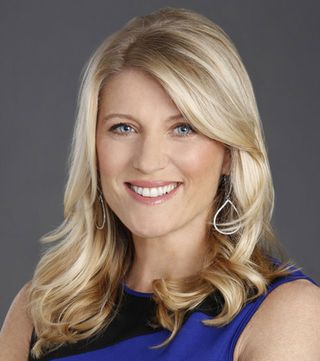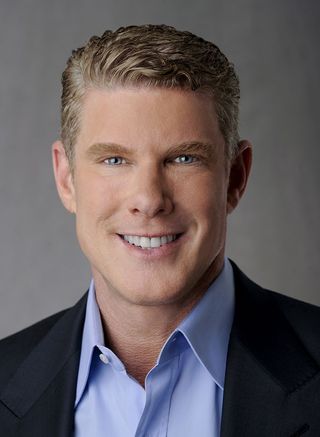It’s Upfront Plus as More Commercials Come to SVOD
Ad dollars will flow to streaming, but are there enough eyeballs available for sale?

Netflix doesn’t have commercials. Subscribers have always liked that and made Netflix the No. 1 streaming service. HBO never had ads. It’s not TV, it’s HBO, after all. Or at least it wasn’t.
In June, AT&T’s WarnerMedia unit will launch a version of the subscription video-on-demand service HBO Max that will have commercials. Around the same time, ViacomCBS will be launching an ad-supported tier of its Paramount Plus SVOD service. Those follow on the heels of launches of the Discovery Plus SVOD offering in January and Comcast’s Peacock last year, both of which give subscribers the option to watch commercials or pay more and avoid them.
Those media companies will be spending big to get consumers to sign up — maybe you saw their Super Bowl ads — and pushing hard to get advertisers to sign on during the upcoming upfront.
Dawn of a New Era?
“This year is going to be the year,” Geoffrey Calabrese, chief investment officer for Omnicom Media Group, said. “This upfront is going to really set up the future of everything. You’re going to see a pretty substantial shift” in ad dollars moving from linear TV to streaming. “It’s just a fascinating time to be in the business.”
This SVOD formula of streaming technology, direct-to-consumer relationships and advertising addresses some of the TV industry’s biggest recent problems. Over-the-top programmers such as Netflix or Amazon Prime Video (which don’t run ads) have been driving consumers to cut the cord, depriving networks of subscriber revenue and reducing the number of eyeballs they have to sell to advertisers. And as audiences get smaller, it is harder for marketers to reach consumers and commercials get more expensive on a cost-per-consumer basis.

“Traditional linear TV is experiencing such a significant decline in viewership that available inventory is falling in a pretty meaningful way,” said Brian Wieser, global president, business intelligence at agency GroupM. “You’ve got some problems if you’re an advertiser.”
But adding commercials might not be an easy fix for media companies. Netflix, Amazon, Apple TV Plus and Disney Plus are likely to remain commercial-free. “If the dominant players have no ads, it’s going to be hard to be competitive if you have more than a light ad load,” Wieser said.
Broadcasting & Cable Newsletter
The smarter way to stay on top of broadcasting and cable industry. Sign up below
More Ads, Lower Prices
Viewers also have a problem paying for the growing number of streaming services that are springing up. Subscription prices can be lower — if a viewer is willing to watch commercials.
“Advertising, when executed thoughtfully and elegantly, is a powerful way to lower prices for everyone,” WarnerMedia CEO Jason Kilar said in laying out plans for an ad-supported version of HBO Max that will launch in June.

The ad-supported version (which WarnerMedia hasn’t disclosed pricing for yet) won’t offer Warner Bros. movies at the same time as they are in theaters, a key feature of the premium SVOD service, and it won’t have commercials added to HBO original shows.
“I also believe that marketers are going to be delighted, thanks in part to the safe, addressable, premium environment unlike any service out there,” Kilar said. “The pre-launch response from marketers certainly suggests that they agree with these statements, given that we already have $80 million in upfront commitments.”
Kilar knows a bit about streaming services and ads from the days when he launched Hulu. Hulu, which is now controlled by The Walt Disney Co., has an ad-free version and its ad-supported version is the leader and model in the connected-TV space with its targeting capabilities and innovative ad formats. Hulu has said in the past that about 70% of subscribers to the SVOD service choose the lower- cost version that has ads.
Hulu and the other streaming services will be a massive part of this year’s upfront pitches — although some question how much inventory they’ll have to sell.
“They will 100% be a part of the upfront conversation and a larger part of that conversation each year from here on out,” David Campanelli, chief investment officer at Horizon Media, said.
“I would say it’s their No. 1 priority,” Omnicom’s Calabrese said. “It’s going to be a big push in the upfront, absolutely.”
The ad-supported versions of HBO Max and the rest could be a solution to the loss of reach that TV networks and their sponsors have been experiencing. It’s been hard to get firm numbers of subscribers to some services from salespeople, but Calabrese expects to get good data once campaigns start to run.
HBO Max is promising a maximum of four minutes per hour of ads, Calabrese said, and is offering premium content, unique ad experiences and a safe environment when parts of the streaming world can be like the Wild West.
Paramount Plus and the others are making the same sort of pitch. “There are different flavors, but there is a lot of similarity,” Calabrese said. “I think a lot of people are drafting off the success that Hulu’s having in the space.”
Hulu is The Walt Disney Co.’s ad-supported entertainment SVOD, paired with ad-free Disney Plus.
“All of the streamers have really done a nice job of presenting what their capabilities are and what we can expect,” Calabrese said. “The more they build scale and the more sophisticated their addressability gets, the more effective they’re going to be.”
The streamers also expect advertisers to pay top dollar for the lack of clutter, precise targeting and better data about campaign performance. “That’s my job, to make sure it’s not a premium price,” Calabrese said.
Much of this new streaming video will be sold programmatically. So far, some streamers are getting prices equivalent to those seen in the upfront and scatter market, said Scott Schiller, global chief commercial officer of Engine, a global, full-service media and marketing services company.
“It’s better for the marketer that they will eventually be able to target very specific audiences in the genres they want,” Schiller said. But, as when cable was new, the streaming services are getting 40% of the audience but only 5% of media spend.
Comcast’s NBCUniversal unit introduced Peacock last year with a free, ad-supported tier; a premium tier ($4.99) that has more content, including sports programming; and an ad-free option for $9.99.

“We created Peacock with the marketer and the consumer at the heart of what we’re doing,” Laura Molen, president of advertising sales and partnerships at NBCU, said. “It’s the best of premium content combined with our technical prowess.”
Peacock launched with a group of sponsors, each of which was promised a share of Peacock’s audience. They included State Farm, Target and Unilever.
Molen said that 77% of Peacock viewers said they liked the low amount of ads on Peacock, a 10% higher score than other streaming services, and 76% said Peacock did a good job showing them a variety of ads, rather than the same ones over and over.
But NBCU hasn’t disclosed how many people are choosing the ad-supported version of Peacock and which version generates more revenue. Peacock also has sports content.
Ads on Peacock can be unique. State Farm worked with the creators of The Office on a spot that showed someone throwing a stapler through a window and invited viewers to send “Jake from State Farm” their own funny home-office stories.

But for 2020, Peacock generated just $118 million in revenue and lost $914 million, according to a Comcast financial filing.
More recently, NBCU opened Peacock ad sales to additional clients. And last month, it said inventory on Peacock would be sold programmatically and included in NBCU’s cross-platform planning systems.
“We’re in the market now talking to advertisers about Peacock in the upfront and we’ve been really getting great feedback, great interest in Peacock,” Molen said.
NBCU’s last official announcement was that Peacock had generated 35 million signups. Molen said Peacock has been growing and that it’s pacing to have the same kind of mass reach for key demographic groups such as adults 18-49 as broadcast prime — and is being priced that way.
“Peacock is really the most premium of all things that we have right now,” she said. “It’s really up there in terms of prime, Olympics, NFL, our most premium products.”
ViacomCBS had launch partners for Paramount Plus when the streaming service debuted in March, even though the $4.99 a month ad-supported version won’t be here until June. (The $5.99 version of CBS All Access is still available.) Those sponsors included heavyweights like General Motors, Procter & Gamble and Expedia. A co-branded spot promoted GM’s electric vehicles.
Those sponsorship deals end in June and ViacomCBS is looking to renew those and get new advertisers to sign up, said David Lawenda, executive VP, digital sales and strategy at ViacomCBS. There are active conversations and some advertisers have already signed up for the second half of 2021, Lawenda said.
ViacomCBS’s High EyeQ Play
Paramount Plus is being sold in scatter and in the upcoming upfront auction as the anchor product of ViacomCBS EyeQ, the company’s consolidated digital content advertising offering. EyeQ’s video inventory provides massive reach with 60 million full-episode viewers per month, with 80% of viewing taking place on TV screens. And 45% of that reach is incremental to linear TV, Lawenda said, because many EyeQ and Paramount Plus viewers are cord-cutters and cord-nevers.

EyeQ Video can be bought based on traditional age and gender demos or on advanced target segments. Inventory can be bought directly, via programmatic guarantee or through a private marketplace. “We’re giving advertisers a lot of choice here,” he said.
EyeQ Video also has “content pillars” that match up with linear programming, such as primetime replacement, with inventory in the most-premium shows including the Paramount Plus originals. There are pillars that mirror the company’s cable programming and sports.
“Clients and agencies know they have to move a significant amount of investment to streaming video,” Lawenda said. “Otherwise they’re going to be facing significant year-over-year rates of change [in price]. You don’t get any closer to television that ViacomCBS EyeQ.”
In the upfront, EyeQ will be a big part of the conversation at ViacomCBS, as a supplement to broadcast and cable. “Any ratings point that we’re losing in broadcast and cable can be made up through EyeQ and we’ve made it easy for clients to transact," he said. "You can be certain at this year’s upfront that EyeQ is an extension and complement to everything we are doing in broadcast and cable.”
If clients want to buy a full rotation of digital inventory and don’t insist on particular programs, networks or dayparts, “we can make that very efficient, more efficient than broadcast.” But if a client wants just EyeQ Prime, the price is comparable to broadcast prime, he said.

Discovery Plus was launched in January in two versions, one without ads for $6.99 a month and one with ads for $4.99. The ads sold out in the first quarter, said Jon Steinlauf, president of ad revenue at Discovery. “We’re running at full capacity,”
he said.
Discovery shows are produced with four breaks per hour. On Discovery Plus, each of those breaks is one-minute long, with a countdown clock to let viewers know when the show will return.
Some of the ads were sold in the upfront market, even though a firm launch date wasn’t announced until December. Some sold in scatter. Programmatic sales are taking Discovery Plus to sellout, the company said.
Impressions sold through demand-side platforms have gone for higher cost per thousand (CPM) rates with more targeting, Steinlauf said. Those advertisers are likely looking at the cost per incremental reach point.
Streaming is changing the way Steinlauf, a longtime sales executive for Scripps Networks such as HGTV and Food Network and now for Discovery, looks at TV. Instead of waiting for overnight cable ratings, he can check a dashboard at 7 a.m. to see what Discovery Plus subscribers watched and how they watched it.
Targeting Binge-Watchers
One surprise is how binge-worthy some of Discovery’s shows are, like House Hunters, Deadliest Catch and Gold Rush, he said. Discovery is working on its own version of a binge-watching ad that will let viewers know that, thanks to a sponsor, they can watch the fourth episode commercial free.

Older shows from networks like Animal Planet and Science are getting new life via streaming, he added.
The future of the TV business is having a really smart algorithm that figures out what people like to watch and helps them find it, Steinlauf said. “The algorithm is the key to this business because I think it will make the experience so much more responsive for the consumer.”
Discovery learned that, and other lessons, from its authenticated Go app, which launched about five years ago. In addition to curating content, Discovery had to develop programmatic technology and relationships. Lessons learned, the Go apps have been the fastest-growing part of Discovery’s ad business.
Discovery has also found that ads on its Go apps generate CPMs that are twice that earned by cable networks. Discovery Plus, which reaches beyond cable subscribers, is getting triple cable’s CPMs.

Steinlauf noted that the streaming ad business is different from the traditional TV business. Much of it operates on impressions among people age 2 and up, instead of ratings in a demo. Delivery is measured by ad servers at FreeWheel, instead of Nielsen, and impression guarantees and frequency limits can be managed in flight. And when the agreed-to number of impressions is reached, the ad stops running. No more underdelivery or overdelivery.
And that brings us back to the upfront. It’s generally accepted in the market that the supply of impressions in linear channels will be tight, forcing advertisers to buy digital video.
But Steinlauf says no one knows how much premium digital video supply there will be. All of these new streaming services have launched, but they’re still working to add and keep subscribers. And all of them have really low ad loads, he notes.
“With six to 12 months’ worth of data in between upfronts, who’s got the confidence that their app is going to grow subscribers and grow hours watched?” he asked.
“We’re not swimming in supply here. My personal opinion is that digital video is going to be tight and that’s going to cause an even tighter upfront marketplace.”
Jon has been business editor of Broadcasting+Cable since 2010. He focuses on revenue-generating activities, including advertising and distribution, as well as executive intrigue and merger and acquisition activity. Just about any story is fair game, if a dollar sign can make its way into the article. Before B+C, Jon covered the industry for TVWeek, Cable World, Electronic Media, Advertising Age and The New York Post. A native New Yorker, Jon is hiding in plain sight in the suburbs of Chicago.

